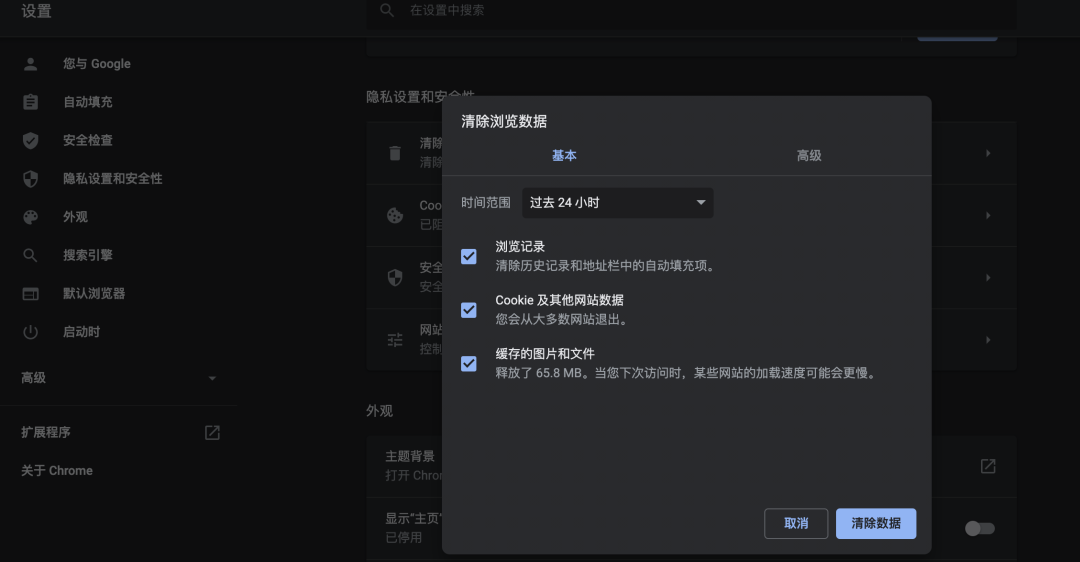为
requests模块
持久化缓存提供支持。在我们使用浏览器浏览网页时,经常会有大量的缓存,为你二次访问网站时更加快速地加载网页。同样地,当使用
requests模块
向一个URL发送重复请求时,也需要判断当前网络是否产生了缓存。此时
Requests-Cache模块
将会自动判断,若产生了缓存,则会读取数据作为响应内容。若没有缓存,则与第一次请求一样,获取服务器返回的响应内容。这样可以变相地躲避一些反爬机制。

>>> # 安装Requests-Cache模块
>>> pip install requests-cache
>>> # 检查模块是否安装成功
>>> import requests_cache
>>> requests_cache.__version__
'0.5.2'
install_cache()
Requests-Cache模块
缓存应用,掌握一个
install_cache()
就够了。
requests_cache.install_cache(
cache_name='cache',
backend=None,
expire_after=None,
allowable_codes=(200,),
allowable_methods=('GET',),
filter_fn=<function <lambda> at 0x11c927f80>,
session_factory=<class 'requests_cache.core.CachedSession'>,
**backend_options,
)一般情况下,不需要单独设置任何参数,使用默认参数即可,为了理解函数功能,一下介绍下各个参数的含义。
cache_name
:缓存文件名称。
backend
:设置缓存的存储机制,默认使用
sqlite
进行存储。支持四种不同的存储机制,分别为
memory、sqlite、mongoDB、redis
。在设置存储机制为
mongoDB、redis
时需要提前安装对应的模块。
pip install pymongo; pip install redies。
memory
:以字典的形式将缓存存储在内存当中,程序运行完以后缓存将被销毁
sqlite
:将缓存存储在
sqlite数据库
中
mongoDB
:将缓存存储在
mongoDB数据库
中
redis
:将缓存存储在
redis
中
expire_after
:设置缓存的有效时间,默认永久有效。
allowable_codes
:设置状态码。
allowable_methods
:设置请求方式,默认
get
,表示只有
get请求
才可以生成缓存。
session_factory
:设置缓存执行的对象,需要实现
CachedSession类。
**backend_options
:如果缓存的存储方式为
sqlit、mongo、redis数据库
,该参数表示设置数据库的连接方式。
应用
>>> import requests_cache
>>> import requests
>>> requests_cache.install_cache() # 设置缓存
>>> requests_cache.clear() # 清空缓存
>>> url = 'http://httpbin.org/get'
>>> res = requests.get(url)
>>> print(f'cache exists: {res.from_cache}')
cache exists: False # 不存在缓存
>>> res = requests.get(url)
>>> print(f'exists cache: {res.from_cache}')
exists cache: True # 存在缓存
一般的反爬措施是在多次请求之间增加随机的间隔时间,即设置一定的延时。但如果请求后存在缓存,就可以省略设置延迟,这样一定程度地缩短了爬虫程序的耗时。
如下运用
Requests-Cache模块
定义钩子函数,合理判断是否使用延时操作。
import requests_cache
import time
requests_cache.install_cache()
requests_cache.clear()
def make_throttle_hook(timeout=0.1):
def hook(response, *args, **kwargs):
print(response.text)
# 判断没有缓存时就添加延时
if not getattr(response, 'from_cache', False):
print(f'Wait {timeout} s!')
time.sleep(timeout)
else:
print(f'exists cache: {response.from_cache}')
return response
return hook
if __name__ == '__main__':
requests_cache.install_cache()
requests_cache.clear()
session = requests_cache.CachedSession() # 创建缓存会话
session.hooks = {'response': make_throttle_hook(2)} # 配置钩子函数
print('first requests'.center(50,'*'))
session.get('http://httpbin.org/get')
print('second requests'.center(50,'*'))
session.get('http://httpbin.org/get')
运行结果如下:
******************first requests******************
{
"args": {},
"headers": {
"Accept": "*/*",
"Accept-Encoding": "gzip, deflate",
"Host": "httpbin.org",
"User-Agent": "python-requests/2.22.0",
"X-Amzn-Trace-Id": "Root=1-5fd19b79-4df1d1e10743807f78ed5776"
},
"origin": "222.211.172.248",
"url": "http://httpbin.org/get"
}
Wait 2 s!
******************second requests******************
{
"args": {},
"headers": {
"Accept": "*/*",
"Accept-Encoding": "gzip, deflate",
"Host": "httpbin.org",
"User-Agent": "python-requests/2.22.0",
"X-Amzn-Trace-Id": "Root=1-5fd19b79-4df1d1e10743807f78ed5776"
},
"origin": "222.211.172.248",
"url": "http://httpbin.org/get"
}
exists cache: True
<Response [200]>
推荐阅读
— 数据STUDIO —

